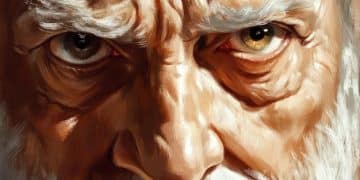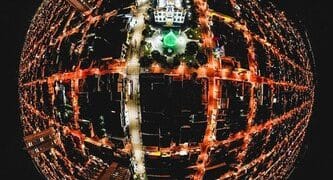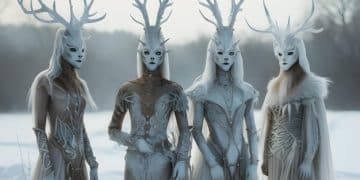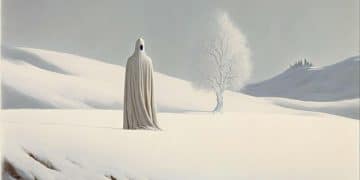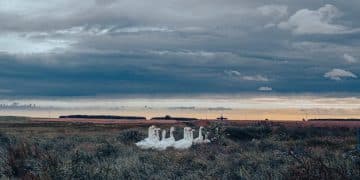Netflix’s The Witcher: Book vs. Show Adaptations Compared
Netflix’s ‘The Witcher’ series, while popular, significantly diverges from Andrzej Sapkowski’s original books in plot, character development, and world-building, sparking debate among fans of the source material.
The world of “The Witcher,” conceived by Polish author Andrzej Sapkowski, has captivated readers and viewers alike. However, the Netflix adaptation of Netflix’s ‘The Witcher’: How the Show’s Adaptations Differ from the Original Books has stirred considerable discussion regarding its fidelity to the source material. How closely does the show adhere to the intricate plots, well-developed characters, and rich lore established in the books?
Exploring the Narrative Structure
One of the earliest and most noticeable differences lies in the narrative structure. The books, particularly the short story collections, often employ a non-linear approach, weaving together Geralt’s monster-hunting adventures with overarching political and personal storylines. How has this been translated to the screen?
Non-Linear Storytelling in the Books
Sapkowski’s narrative style in “The Witcher” books is characterized by its fragmented and episodic nature, especially in the early stories. These tales often serve as character introductions and world-building exercises, gradually revealing the larger scope of the saga. This approach allows readers to piece together the intricate puzzle of the Continent and its inhabitants.
The Show’s Streamlined Approach
In contrast, the Netflix series initially attempted a similar multi-timeline structure, which proved confusing for many viewers. Later seasons have adopted a more linear approach, focusing on a more straightforward progression of events. Is this simplification beneficial, or does it detract from the intricate storytelling of the books?
- The books’ short story format allows for exploration of diverse themes and monsters, offering a wider representation of the Witcher’s world.
- The show condenses several storylines, altering the pacing and impact of key events.
- The shift to linearity in later seasons aims for accessibility but may sacrifice the complexity of the original narrative.
- Early confusion with multiple timelines highlights the challenges of adapting non-linear narratives for a visual medium.
The differing narrative structures reflect the inherent challenges in adapting a literary work for television. While the books embrace complexity and ambiguity, the show often opts for a more streamlined and easily digestible format. This decision inevitably impacts the depth and richness of the storytelling.
Character Depictions: Geralt, Yennefer, and Ciri
The central characters of “The Witcher” – Geralt, Yennefer, and Ciri – are beloved for their complex personalities and compelling arcs. How accurately does the Netflix series capture the essence of these characters, and where do the adaptations diverge?
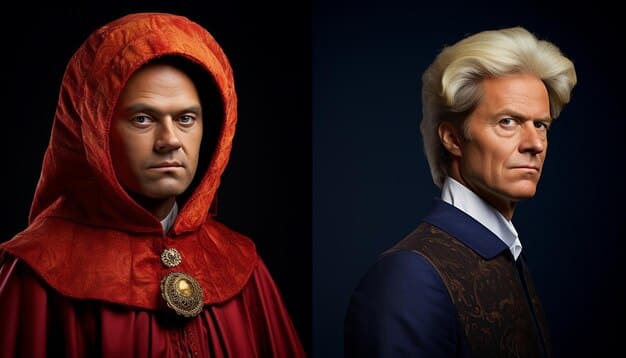
Geralt of Rivia: The Witcher
In the books, Geralt is portrayed as a weary and introspective monster hunter, often cynical but possessing a strong moral compass. The show’s Geralt, especially in the earlier seasons, captured some of this essence, but also introduced a more heroic and emotionally expressive portrayal. How have these nuances been handled?
Yennefer of Vengerberg: The Sorceress
Yennefer is depicted in the books as a powerful and ambitious sorceress with a complex backstory and a fierce independence. The Netflix series expands on her origin story, providing a greater focus on her early life and motivations. Does this added depth enhance her character, or does it alter her core identity?
- The books present Geralt as more stoic and reserved, while the show initially amplified his emotional expressions.
- Yennefer’s expanded backstory in the series offers a deeper understanding of her motivations but also deviates from established lore.
- Ciri’s portrayal in the show captures her resilience, but some fans argue that her character development is rushed compared to the books.
The television adaptation provides a fresh take on characters. While some fans appreciate the added depth and emotional accessibility, others feel that these changes compromise the integrity of the original characters.
Political Intrigue and World-Building
“The Witcher” is set in a richly detailed world filled with complex political dynamics and intricate social structures. The books delve deep into these aspects, exploring the tensions between humans, elves, dwarves, and other races. How effectively does the Netflix series portray this intricate world?
The Continent’s Complexities
Sapkowski’s world-building is meticulous, creating a Continent rife with political machinations, racial tensions, and ancient magic. The books explore these themes through the interactions of various factions and the characters who navigate this treacherous landscape.
Adaptations and Omissions
The Netflix series attempts to capture the essence of this world, but often simplifies or omits key elements. The political intrigue, while present, sometimes lacks the depth and nuance found in the books. How do these alterations impact the overall authenticity of the adaptation?

- The books delve deeply into the history and culture of different races, providing a nuanced portrayal of their conflicts.
- The show often focuses more on the main characters, sometimes at the expense of exploring the broader political landscape.
- Omissions of certain key events and characters can impact the overall understanding of the world’s complexities.
The series faces the challenge of conveying a vast amount of information to viewers in a concise and engaging manner. By simplifying elements of political intrigue and world-building, the show risks losing some depth.
Key Plotlines and Events
The overarching plotlines and significant events in “The Witcher” universe are crucial to the overall narrative. How do the adaptations in the Netflix series compare to the original depictions in the books?
The Destiny of Ciri
Ciri’s destiny as a child of Elder Blood and her connection to Geralt and Yennefer form the core of the saga. The books gradually reveal the significance of her lineage and her role in shaping the future of the Continent.
Altered Story Arcs
The Netflix series alters and condenses several key plotlines, sometimes changing the motivations and outcomes of certain events. These deviations can have a significant impact on the overall narrative arc. Are these changes justified in the context of adaptation, or do they undermine the integrity of the original story?
- The show introduces certain storylines earlier or later than they appear in the books, altering the pacing and impact of key events.
- Some character relationships and motivations are changed, leading to different outcomes and character arcs.
- These plot alterations have caused debates among fans of the books, with some accepting them as necessary adaptations and others criticizing them as deviations from the original vision.
These deviations from key plot points can either enhance or detract from the essence of the story, depending on the viewer’s perspective.
Fan Reception and Critical Response
The Netflix adaptation of “The Witcher” has garnered a wide range of reactions from fans and critics alike. How do these responses compare, and what are the key points of contention?
Divergent Opinions
While the series has achieved mainstream popularity, it has also faced criticism from fans of the books who feel that it deviates too significantly from the source material. Critics have offered mixed reviews, praising the performances and production value but also noting issues with the writing and pacing.
Adaptation vs. Interpretation
The debate often centers on the balance between adaptation and interpretation. How much creative license should be allowed in adapting a beloved book series for television? Can the show stand on its own merits, or will it always be judged in comparison to the books?
- The show’s visual style and action sequences have been praised, while some fans have criticized the changes to character relationships and plotlines.
- Critics have noted that the series sometimes struggles to balance its complex storylines and character arcs.
- The show’s success in attracting a wider audience has been tempered by concerns about its fidelity to the source material.
The contrast in opinions highlights the challenges of adapting a beloved franchise for a new medium, balancing the desire to remain faithful to the source material with the need to create an engaging and accessible television series.
Future of the Adaptation
As “The Witcher” series continues, the question of how closely it will adhere to the books remains. What can viewers expect from future seasons, and how might the show continue to evolve?
Potential for Reconciliation
There is potential for the series to reconcile some of the differences between the adaptation and the books. Future seasons could delve deeper into the political intrigue and world-building, and strive for greater accuracy in character depictions and plotlines. What steps could be taken to bridge the gap between the two versions of “The Witcher?”
Balancing Act
Ultimately, the success of the adaptation will depend on its ability to strike a balance between honoring the source material and creating a compelling television series. This requires a delicate touch and a deep understanding of what makes “The Witcher” so beloved by its fans.
- Future seasons could explore more of the short stories and side quests from the books, expanding the scope of the narrative.
- Greater emphasis on character development and nuanced storytelling could help to bridge the gap between the adaptation and the original works.
- Engaging with fan feedback and addressing concerns about fidelity to the source material could improve the overall reception of the series.
Adapting a literary work is inherently a process of interpretation and reinvention. The key lies in preserving the spirit and essence of the original while embracing the unique possibilities of the new medium.
| Key Aspect | Brief Description |
|---|---|
| 📖 Narrative Structure | Books use non-linear storytelling; show shifts towards linearity. |
| 🧙 Character Depictions | Show expands on backstories, altering core traits. |
| 🌍 World-Building | Series simplifies political intrigue and omits key elements. |
| 🎬 Plotlines & Events | Show condenses plots, changing motivations and outcomes. |
Frequently Asked Questions
▼
The show takes liberties with the source material, altering plotlines, character backstories, and the overall pacing of events compared to Andrzej Sapkowski’s novels and short stories.
▼
Geralt is often more emotionally expressive in the show, while Yennefer’s early life receives significant expansion. Key relationships are also sometimes altered for dramatic effect.
▼
The series alters and condenses several plotlines from the books, sometimes changing the motivations and outcomes of certain events to fit the television format.
▼
Adaptations often require changes to fit the new medium, streamline complex narratives, and appeal to a broader audience. This sometimes leads to deviations from the source material.
▼
The show offers a fresh perspective on the characters and world of “The Witcher,” It can be enjoyable as a separate interpretation, even if it’s not a perfect adaptation.
Conclusion
Ultimately, the Netflix adaptation of “The Witcher” presents a reimagining of Andrzej Sapkowski’s beloved books. While it deviates from the source material in significant ways, it also offers a fresh and accessible entry point into this rich fantasy world. Whether these changes enhance or detract from the original vision is a matter of personal preference, but the series has undoubtedly sparked a new wave of interest in “The Witcher” universe.

